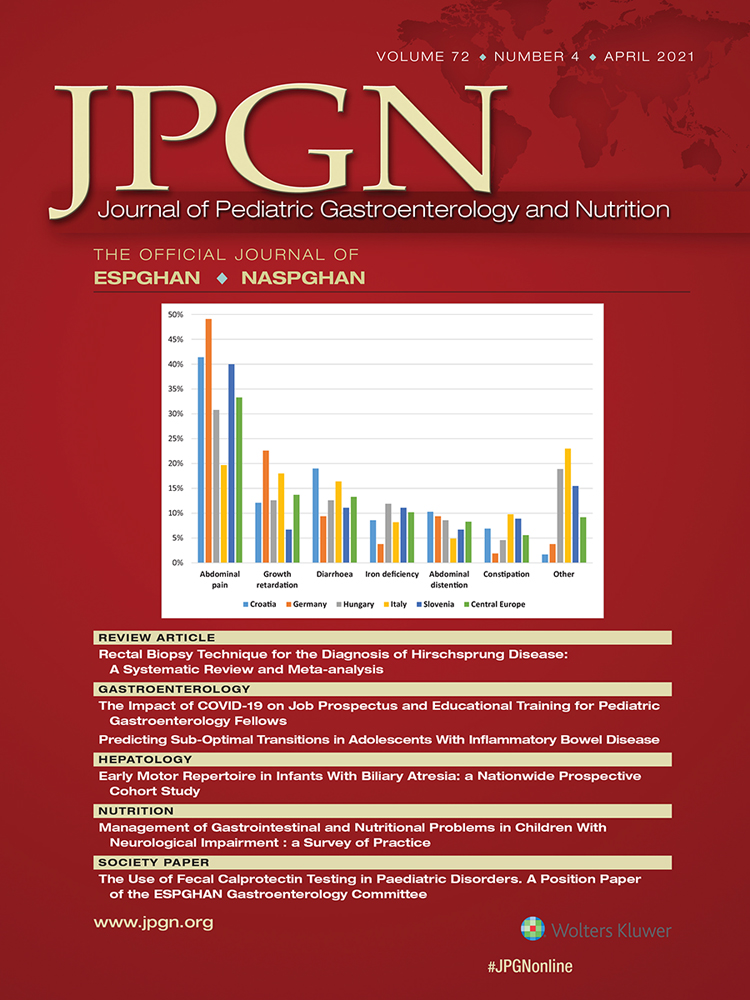Evaluation of Nonalcoholic Fatty Liver Disease in Pediatric Patients With Inflammatory Bowel Disease
Supplemental digital content is available for this article. Direct URL citations appear in the printed text, and links to the digital files are provided in the HTML text of this article on the journal's Web site (www.jpgn.org).
This work was accepted at Digestive Disease Week 2020 (American Gastroenterological Association), May 2020.
The authors report no conflicts of interest.
ABSTRACT
Adult studies demonstrate the co-existence of nonalcoholic fatty liver disease (NAFLD) and inflammatory bowel disease (IBD) without traditional risk factors. Data in children with IBD are lacking. Here, we sought to establish the prevalence of NAFLD in a single-center pediatric IBD cohort, and identify potential risk factors. After institutional review board approval, we enrolled children with IBD who underwent routine abdominal magnetic resonance enterography. Proton density fat fraction (PDFF) was then estimated on magnetic resonance enterography. A total of 83 patients with IBD were identified and PDFF maps completed. Five (6%) were found to have PDFF >5%, meeting criteria for NAFLD. Compared to the patients with IBD without NAFLD, none of the evaluated risk factors including age, sex, diagnosis, time since diagnosis, medication, median alanine aminotransferase, and weight status were statistically significant. Our findings demonstrate the occult nature of NAFLD in pediatric IBD. The prevalence is not at variance with what is expected in general teenage populations.




